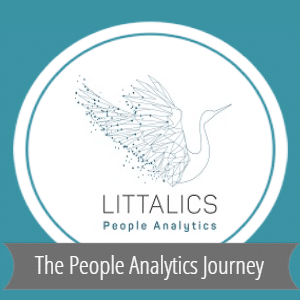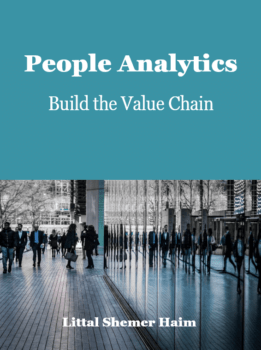(This article was re-published and featured on the cover of HR Strategy and Excellence magazine by HR.com)
Too often, I hear HR leaders declaring that they are already on the right track to People Analytics practices because they have a data analyst in their department. But with all the respect to data analysts, I do not expect these valuable professionals to lead the organization on the journey to data-driven HR. They indeed have the skills to approach data and bring insights based on the business they were presented with. However, the owners of HR data strategy are HR executives.
There are different lenses through which you can explore HR data strategy and the HR-tech industry. The lens I choose is my experience as an applied researcher specialized in organizational research. For more than two decades, I assisted organization leaders in improving business performance based on quantitative and qualitative research tools. When technology disrupted the research industry and offered automation of many research tasks, my role evolved to be a mentor of HR leaders and assist them in strengthening their analytics muscles and becoming informed clients of analytics solutions. My perspective could be your lighthouse in the rough seas of this industry and another step to overcome some barriers on your journey to data-driven HR.
A few warning words: While so many HR professionals struggle to upskill and reskill in analytics and make an effort to understand the difference between HR reporting and business decision support, it turns out that the dominance of human resources, for example, over its data science, is in danger. A study sponsored by the Singapore government shows that out of 27 HR positions, 24 are at risk and will be replaced by artificial intelligence within three to five years. However, the only roles that cannot be replaced by automation are related to the analytical ability to connect business issues and human processes to technology procurement and ethics capabilities. In other words, This is the understanding of human behavior needed for the organization’s business success and choosing the right technological solutions to support it. For that reason, the technology piece in the People Analytics value chain model is so crucial.
The funnel of HR data strategy
HR data strategy is a funnel to which you pour business questions and extract actionable insights. Business questions are related to human resource processes from which data are derived. The data collected is stored on a platform and is the basis for analysis, a predictive model, or a diagnostic model for understanding relationships between variables. The outputs derived from the analysis are usually presented in visual tools from which we derive insights.
However, whatever storage platform, analytics solution, and visualization tools we use, we always start with business questions, and we endeavor to reach actionable insights. A common mistake is starting your analytics initiative with data analysis and not with a business question. I guarantee that if you decide to look for exciting findings in your data, there is always a high chance that you’ll find them. But the excitement does not affect the business, aside from losing valuable managerial attention.
Another common mistake is to postpone any analysis until the entire workforce data is perfect. As I mentioned when discussing the messy data in HR, it will not happen any time soon. The trick is to identify relevant data sources for a business question, focus on optimizing these data, and strive to optimize a procedure or work routine accordingly.
Four categories of analytics
Let’s focus on the analytics layer in the funnel of HR data strategy. How do you actually analyze HR data? No matter how you do it, your methods will fall into one or more of four categories, each of which has advantages and disadvantages: Research software, BI tools, Data science programming, and People Analytics products.
A common way to analyze HR data is using one of the off-the-shelf software. For instance, many HR departments rely on Excel, and professionals with a social science background chose to use SPSS or other statistical analysis software. Sometimes it is tempting to start using the software. However, a high level of expertise is needed to document your work on this software so others can track or reproduce it.
Another common approach that analysts leverage in all organization’s verticals and HR is no exception is using BI systems that enable them to generate queries on databases and visualize findings in a format known as dashboards. In this category, you will find tools like Power BI, Tableau, Qlik, and more.
Data scientists work on Integrated Development Environments (IDE), which are, in simple words, software applications that provide computer programmers the facilities for code-writing in programming languages such as Python or R. In open source programming languages, data scientists access libraries that contain ready-made code for plenty of objectives and can contribute their own code to the community. They can leverage it to write everything from scripts to projects to enterprise applications to deal with any kind of business question related to the workforce. A significant advantage in using R or other programming languages is the inherited reproducibility.
The last category is shelf products in the field of People Analytics. The uniqueness here is that solution developers thought in advance about most or many business questions, covered the relevant data sources and visualization, and present an almost ready-made solution to implement in the organization. This market is evolving fast, and I constantly explore it in my industry analysis.







